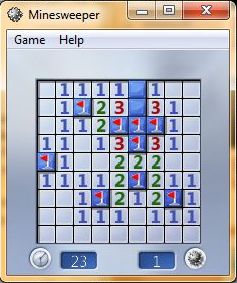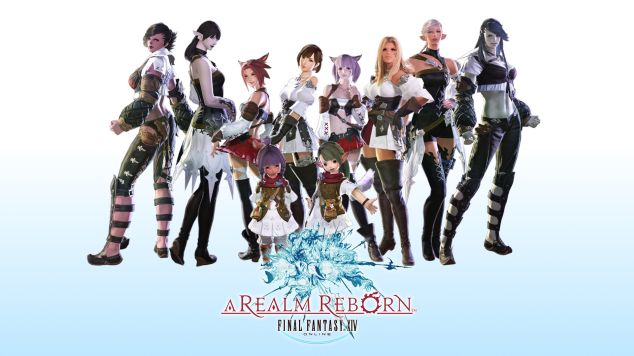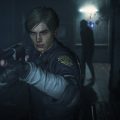Dragon Quest Monsters – Nostalgia Hipster

 If there’s one thing Square-Enix is known for, other than long development times, pretty graphics, an oversaturation of Final Fantasy titles or Tetsuya Nomura’s fashion designs, it’s a strong predilection towards making money off of the romantic notion that the 8 and 16 bit eras were the best that gaming had to offer. Final Fantasy IV, for example, has been ported to the PlayStation, PlayStation Portable, Game Boy Advance and the Wonderswan Color, and was remade for the Nintendo DS, upon which the remake was ported to mobile devices as well as the PC. Characters from Final Fantasy IV have appeared in spin-off titles such as Dissidia, World of and Theatrhythm, and Cecil himself makes a cameo appearance in Secret of Evermore, and shows up on a Triple Triad card in Final Fantasy XIV.
If there’s one thing Square-Enix is known for, other than long development times, pretty graphics, an oversaturation of Final Fantasy titles or Tetsuya Nomura’s fashion designs, it’s a strong predilection towards making money off of the romantic notion that the 8 and 16 bit eras were the best that gaming had to offer. Final Fantasy IV, for example, has been ported to the PlayStation, PlayStation Portable, Game Boy Advance and the Wonderswan Color, and was remade for the Nintendo DS, upon which the remake was ported to mobile devices as well as the PC. Characters from Final Fantasy IV have appeared in spin-off titles such as Dissidia, World of and Theatrhythm, and Cecil himself makes a cameo appearance in Secret of Evermore, and shows up on a Triple Triad card in Final Fantasy XIV.
Dragon Quest, on the other hand, does not have the same reputation and it feels like a recent development that the series has begun to celebrate its roots with titles such as Dragon Quest Builders taking place in an alternate universe created by making both endings from the first game canon, and Dragon Quest Heroes featuring playable characters from throughout the main series.
It will probably come as a surprise to find out that in 1998, before the Squaresoft/Enix merger, the Dragon Quest series released a title meant to revel in series nostalgia, a few years before the Final Fantasy series started to do the same. If Kingdom Hearts can be considered the start of the wave of Final Fantasy nostalgia, then Dragon Quest Monsters started the wave of Dragon Quest nostalgia. Thus, for the thirtieth anniversary of the Game Boy, it is very appropriate to celebrate our nostalgia for the handheld by discussing a game built on nostalgia.
Note: Dragon Quest Monsters was released as Dragon Warrior Monsters in North America.

One thing that may surprise players familiar with Dragon Quest is how juvenile the story in Monsters sounds. Terry’s sister Milayou is kidnapped by an evil monster that emerges from inside his dresser drawer one day, and a good version of the monster soon shows up to pull him inside as well. He ends up in a giant tree on a world where kingdoms live in trees and he finds out that he can get his sister back not by venturing out into the world and gathering allies and getting stronger, Dragon Quest style, but by gathering monsters and making them fight in his stead in various dungeons he can access through warp portals. Then, when his team is strong enough, he can enter a tournament which, if he wins, will grant him a wish which he can use to get his sister back. I wish more characters realized the power of wishes. Don’t you just want to throttle Sora for not realizing that he could’ve asked Genie for a wish or two to make his quest in Kingdom Hearts a little easier?
The story might not be as phenomenal as Dragon Quest V’s, but given that the characters of Terry and Milayou are younger versions of characters from the sixth game in the series, and that the game appeared on the original Game Boy, it makes perfect sense that the story would be aimed towards a younger demographic. However, one should keep in mind that Final Fantasy Tactics Advance was designed with a younger demographic in mind as well, yet it dealt with some very heavy real world issues in a very mature story, as if the writers trusted that the target audience would be intelligent enough to get it.
Although Pokémon predated this game by a couple years, Dragon Quest V featured recruitable monsters first and it is that game upon which this one draws much inspiration from. Monsters are recruited at random, with certain common monsters being easier to recruit and rarer monsters being harder to recruit. After battle, there is a chance that a defeated monster will ask to join the party. Feeding the enemy monsters meat will increase the chance they’ll ask to join, but it’s no guarantee. It is an easier system than weakening an enemy and then tossing balls at them and hoping that they don’t break out, but the trade-off is that it’s possible to go an hour or more without recruiting anyone if random chance decides not to give you that Minidrak you’re trying to get.
It is inevitable that comparisons are drawn between this game and Pokémon. Although there isn’t that sense of “gotta catch ’em all” that made Pokémon the success it is today, the game still keeps track of which monsters have been acquired and will let players look them up in the library, although it’s not quite as well implemented as a Pokédex. In a sense, feeding a monster some meat is like tossing a ball, but then the monster must be defeated to see if the attempt to catch him was successful or if he got away; at least in Pokémon, a player can continually toss balls until they either catch the monster or run out of balls entirely. Monsters level up faster in this game, though, since one of the biggest aspects of this game is monster breeding. One can get away with never breeding in Pokémon, but breeding is how monsters become stronger here, they gain higher stats and are allowed to reach higher levels than caught monsters.
If the monster catching and battle system are inspired by Dragon Quest V, the Starry Night Tournament is probably modelled after the original version of Dragon Quest IV, where characters not the player’s own are AI controlled. At least the characters in Dragon Quest IV seemed to perform their roles intelligently. In the Starry Night Tournament, the player’s monsters are AI controlled, for some reason. It makes no sense why they are, when the player can control them at any other point in the game. It’s also occasionally frustrating, as AI in this game is dumber than a sack of bricks. Battles that might’ve ended in the player’s favour if they were allowed to control their team of monsters often ended very badly for the team instead.
There was honestly no reason for this, but the AI-controlled tournament has become a staple of not only the Dragon Quest Monsters series, it has bled into the main Dragon Quest series, most notably in the eighth instalment’s Monster Arena. Then again, the series creator and main designer, Yuji Horii, is known to enjoy gambling so it’s only natural that the series, both its main incarnation and the various spin-off titles, have evolved to include a heavy reliance on RNG. It’s not quite at the level of a true roguelike, but Dragon Quest Monsters, with its randomly generated dungeons, monsters that can randomly join your party, and those very same monsters that sometimes follow your guidance but will still do their own thing in the Starry Night Tournament, feels like as close to a roguelike as players can get outside of the actual Dragon Quest roguelike games like Torneko: The Last Hope.

The worst indictment of the game’s AI comes at the very end of the game. After the final boss is defeated, the player has to finish the final round of the tournament in order to watch the ending and unlock the post-game content. It only took me 26 hours and 56 minutes to reach and beat the final boss. Due to horrible AI and enemies with incredibly devastating attacks in the tournament’s final round, I was forced to breed and grind for an additional 8 hours and 52 minutes after defeating the final boss before I was allowed to watch the game’s ending. In the past, I have had to grind to defeat the final boss of several Dragon Quest games after destroying the penultimate bosses of each, but it usually only required an additional couple levels, which took an hour or two at the most. Requiring nearly nine hours of planning and breeding and grinding in order to see this game’s ending was incredibly frustrating, although later games in the series managed to tone it down. Either that, or I got incredibly lucky in Joker and Joker 2.
Where the game courts nostalgia is in the end bosses of many of the dungeons. The monsters could also be considered to be nostalgic except for the fact that they show up in every game in the series. Slimes and drakkies and ghosts don’t really bring the nostalgia, they’re similar to how each Final Fantasy game features chocobos and each pachinko game released by Konami brings disappointment for fans of real video games who just want to see a new Castlevania announced and not a Castlevania-themed casino machine and I think I’ve lost my train of thought.
For series veterans playing this game for the first time, being in a dungeon when the music suddenly shifts to the overworld theme from the very first game will be enough to make them draw in an excited gasp as memories of following in Erdrick’s footsteps to save Alefgard from the Dragonlord come flooding back. Then, depending on which of the dungeons they’re in, they’ll find themselves either in the dungeon chamber where Princess Gwaelin was being held prisoner by a fierce dragon or outside the village where a golem required defeating. Upon finishing these bosses off, they’ll get up and offer to join the party. Another dungeon ends with a sabrecat reminiscent of the one from Dragon Quest V.
Players who dislike extreme RNG in their games enough to refuse to play roguelikes can rest easy in the knowledge that, even with the extreme grinding needed to win the Starry Night Tournament, Dragon Quest Monsters rewards hard work in the same way that the main series does. This game is only roguelike in that the dungeons are randomly generated; encounters are still random and still balanced in the Dragon Quest style, for this is a Dragon Quest game, and any mildly strong encounter can destroy an unprepared party. Critical hits happen at the worst times and HP values are always kept low to maintain that sense of danger, but like many others in the series, the game is also balanced around levelling up a few times to overcome a challenge. Granted, the final round of the Starry Night Tournament did require an entirely new team to beat, levelled to be even stronger than the party I’d attempted it with nine hours prior, but as I already said, later games toned that sort of thing down.
Overall, I enjoyed my first 27 hours or so of Dragon Quest Monsters. If post game content is your thing, I feel so sorry for you and your many hours of grinding, but otherwise, this is a pretty decent beginning to a spin-off series that I wish we saw a lot more of in North America.





